When I first found this class on ConnectCarolina, I was intrigued to see what exactly I could do in a class about arguing on the internet. I took it as a core class requirement for my English major and expected it to be full of assignments and readings. Cut to the first day of class and I was already eager to continue after seeing the syllabus. I was brainstorming ideas for the assignments within the first twenty minutes. I had no experience with anything we were about to take on, but I was eager to try.
Throughout this class, the main things I took away was how to navigate certain creative apps such as Adobe Photoshop, Adobe XD, and even just a program called TAGs that analyzed tweets for one of the assignments. Additionally, I was exposed to current arguments on the internet (the title of the class included here was not intended to be funny) quite literally because I had to form my own using inspiration from those already existing. There were some assignments that stumped me, as I'll talk about in a bit, but there were some that I absolutely loved and can't wait to share.
To preview this project, I talked a bit about a few of the main projects I enjoyed in the video below which detailed some of the lessons I learned and discussed my opinions on certain aspects of the projects. Feel free to check it out before or after reviewing this portfolio.
I hope you enjoy this journey as much as I did.
Twitter Report
The first assignment we were tasked with was the Twitter Report. Right off the bat when I saw the word Twitter, I was immediately excited. Twitter is my favorite social media application, so using it in a class was very exciting to me.
Choosing a hashtag to analyze for the report was fairly easy because all I had to do was think about what was relevant to me at the moment and what I was interested in. Choosing #AOC based on Alexandria Ocasio-Cortez felt right for me. I like her and I like what she stands for, therefore I was interested to see what people were saying about her.
For my first draft, I put together all the information and analyzed the tweets, categorizing them into 5 different types: the stance toward Ocasio-Cortez, what the tweet was about (her, her policies, other), the gender of the tweeter (if determinable), the action conveyed (supporting, bashing, mocking, questioning, other), and the specific focus of the tweet (climate change, president, gender, election, international, other). Take a look at my first draft using the link below.
http://altscholarship.com/argunet/node/39/revisions/192/view
I was pretty happy with what I had created, so there weren't that many edits to make. It was a fairly simple project that took time only when categorizing the tweets. Professor Anderson gave me some feedback and grammar corrections, which I made fairly quickly, and thus my final draft was born.
http://altscholarship.com/argunet/node/39
 Some of the most intriguing things I discovered was the fact that my opinion on Alexandria Ocasio-Cortez wasn't similar to a lot of opinions on her during the time I collected these tweets. If you take a look at this chart, you will see that 67.7% of the 100 tweets I looked at were against Ocasio-Cortez.
Some of the most intriguing things I discovered was the fact that my opinion on Alexandria Ocasio-Cortez wasn't similar to a lot of opinions on her during the time I collected these tweets. If you take a look at this chart, you will see that 67.7% of the 100 tweets I looked at were against Ocasio-Cortez.
The biggest takeaway I got from this project was the fact that I can't always take what I see on my timeline as the overarching opinion of everyone. Timelines on Twitter are very tailored towards who the account owner is. It is important to expose yourself to more than what you see on the home page in order to get a more full picture of what is going on, not even just for politics.
Overall, this was a fun project to do. I loved the freedom we had when it came to choosing our hashtag, and I loved being able to utilize Twitter in a way that seemed productive. I will definitely be thinking of my results and findings more when the next election comes up.
Audio Arguments
Audio arguments can be hard due to the fact that they, unlike regular essays, do not have a specific structure. Audio arguments rely a lot on delivery and tone of voice due to the fact that the listener can get extremely tired very quickly. The main problem with the audio arguments I did was trying to keep things interesting while also delivering as much information as possible. The audio-essay we did in class was a bit harder than the podcast (which will be discussed later) due to the fact that it was solo and it had to be short and sweet whereas the podcast was with a group and had more of an interesting flow of conversation. The podcast was a lot of talking, but it wasn't as hard to me as preparing the audio-essay was because I truly had to think of how long an individual would actually pay attention to what I was saying in the essay. With the podcast, it varied because I was able to have a conversation with my group that was very interesting and the flow of conversation between each group member made it easier to be more attentive.
The topic I chose for my audio argument was ghosting which describes a friend or someone you are dating who disappears from contact without any explanation. I chose this topic because it's something I've done and had done to me throughout my time on social media, and I find it very intriguing.


The very first thing I did was write a rough draft of a script which was then edited by Professor Anderson for grammar mistakes. Then, I recorded my first draft of the audio essay and edited it together in a program called Audacity. I will admit, I wasn't very fond of Audacity. I think it was pretty complex at times and I had no experience editing audio prior to this class. Fortunately, I was able to get a rough draft I was proud of and uploaded that to our website.
With a bit of peer feedback and feedback from Professor Anderson once again, I tried to create a draft that adhered to that by rerecording the audio and tweaking it a bit. Additionally, I added background music and adjusted the volume of a lot of the clips to try to make it cohesive. Below is the final Audio Essay Draft.
Ultimately, I had less fun on this project than I did on my Twitter report but that's mostly because I had more difficulty working Audacity and got frustrated at times. Other than that, I had fun coming up with this topic and writing the script for it.
Podcast
As mentioned before, I thought the podcast was less challenging for me primarily because I was so excited to discuss the topic of Cancel Culture with my peers. We were all immediately fascinated by the idea and excited to explore it via communication and some research. The part of the podcast that caused me the most anxiety and stress was recording it in front of an audience of our classmates. I've never done something like that before so I was immediately intimidated. However, it didn't go as bad as I had anticipated it would for me. I tend to trip over my words a lot, but it was not as bad as it could have been and for that, I am proud of myself.
A lot of the conversation that occurred in this podcast was based around our feelings of cancel culture, but we did incorporate some examples that have occurred over the past few years including Brett Kavanaugh and Larry Nassar. From this project, I was able to widen my scope of knowledge on the issue and try to brainstorm ways to manage it in the future. I really enjoyed this assignment and would definitely do it again in the future. The ability to choose our own topic was great and allowed our group to discuss something that we cared about and found interesting.
For the final, I essentially just tweaked the audio a bit so it fit more together. I tried to reduce background noise, although luckily there wasn't much to reduce. Other than that, I decided to leave the podcast be as it was because I was really proud of it. Take a listen below.
App Argument
The app argument was an assignment that took me a long time to brainstorm. It took me a long time to generate a topic I wanted to do. Ultimately, I chose gender pronouns because I wanted to create something that emphasized their importance. Personally, I am very passionate about gender pronouns. I identify as she/her/hers, but others who have different pronouns from what society would consider the "norm" don't always get acknowledged or appreciated.
To create this app, I used the Adobe XD program. Truthfully, at first glance, the program looked extremely difficult and was not something I wanted to experiment with. It took me a long time to develop my plan and once I did, I knew it would take a while to set up. For reference, take a look at my first draft through the link below.
https://xd.adobe.com/view/ee8b5ed3-460c-4818-5f63-954d007828ff-98ba/
To edit this for my final draft, I took away the two paths and instead made it so everyone took the quiz, no matter the outcome of the first question. At the end, everyone would then select their pronouns and get a message that told them they were worth it. Additionally, I made some format corrections that cleaned up the whole look of the app. You can try out the final product below!
 I had a lot of fun with this project once I got my idea down. It was really cool to make an app seeing as I had never done so before. I was able to learn more about Adobe XD and now I would say that I am pretty well versed in certain aspects of creating an app because of this project. Overall, I learned that it is important for people to be exposed to things they might not always like in order to better humanity and acknowledge everyone's human rights.
I had a lot of fun with this project once I got my idea down. It was really cool to make an app seeing as I had never done so before. I was able to learn more about Adobe XD and now I would say that I am pretty well versed in certain aspects of creating an app because of this project. Overall, I learned that it is important for people to be exposed to things they might not always like in order to better humanity and acknowledge everyone's human rights.
Memes
The meme project was one of my favorites. For this, we explored Adobe Photoshop which was an application I had heard of and seen other people use but had never used myself. Having absolutely no experience with photoshop was definitely to my detriment. Professor Anderson tried to teach us some techniques but I couldn't always grasp them and oftentimes had to search the internet to learn how to do certain things.
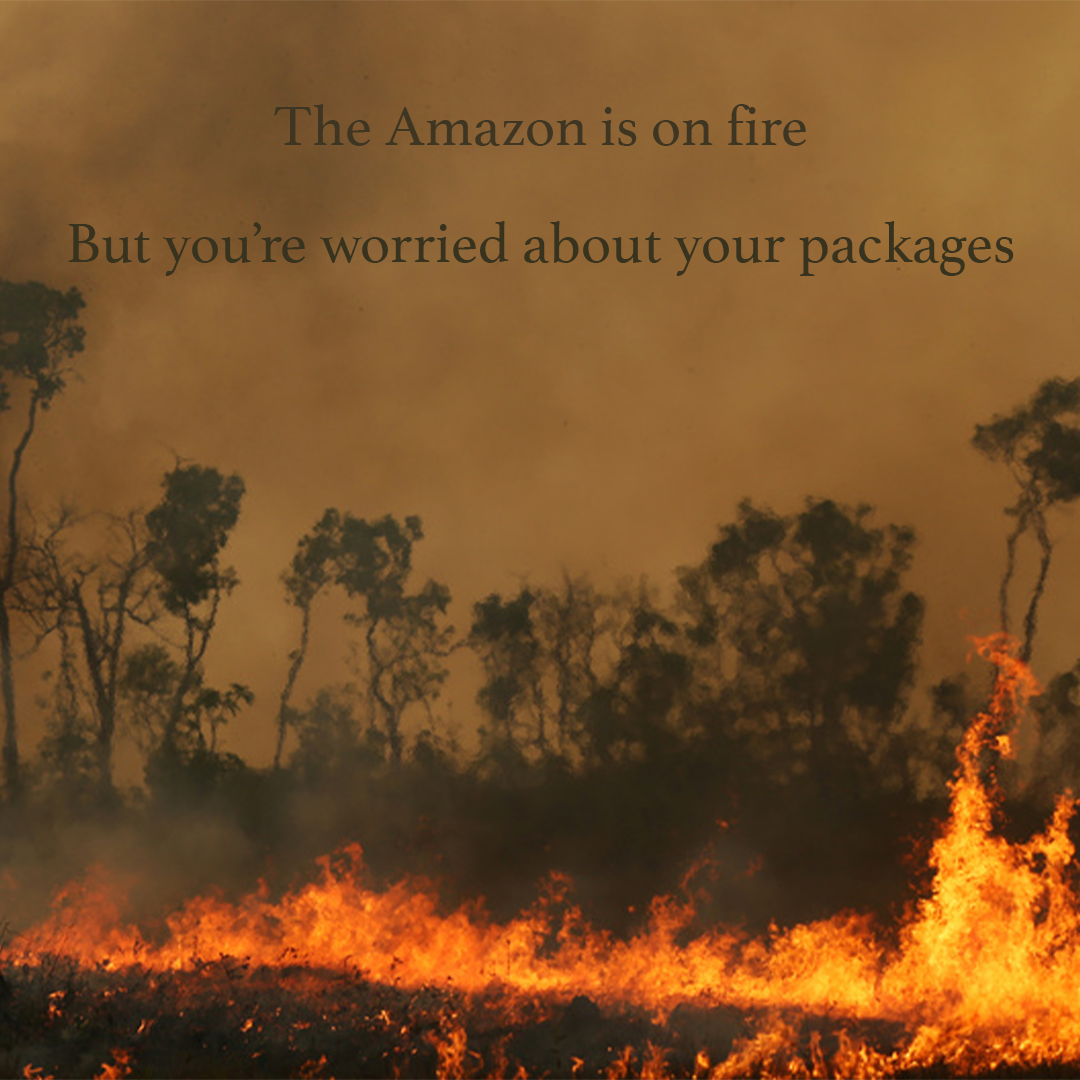 This was the first meme I created based on my hatred for greed and for those who contribute to the Amazon fires. While it isn't funny, and it isn't meant to be, it still gets a point across. This one wasn't hard to create since it was simply text and a picture.
This was the first meme I created based on my hatred for greed and for those who contribute to the Amazon fires. While it isn't funny, and it isn't meant to be, it still gets a point across. This one wasn't hard to create since it was simply text and a picture.
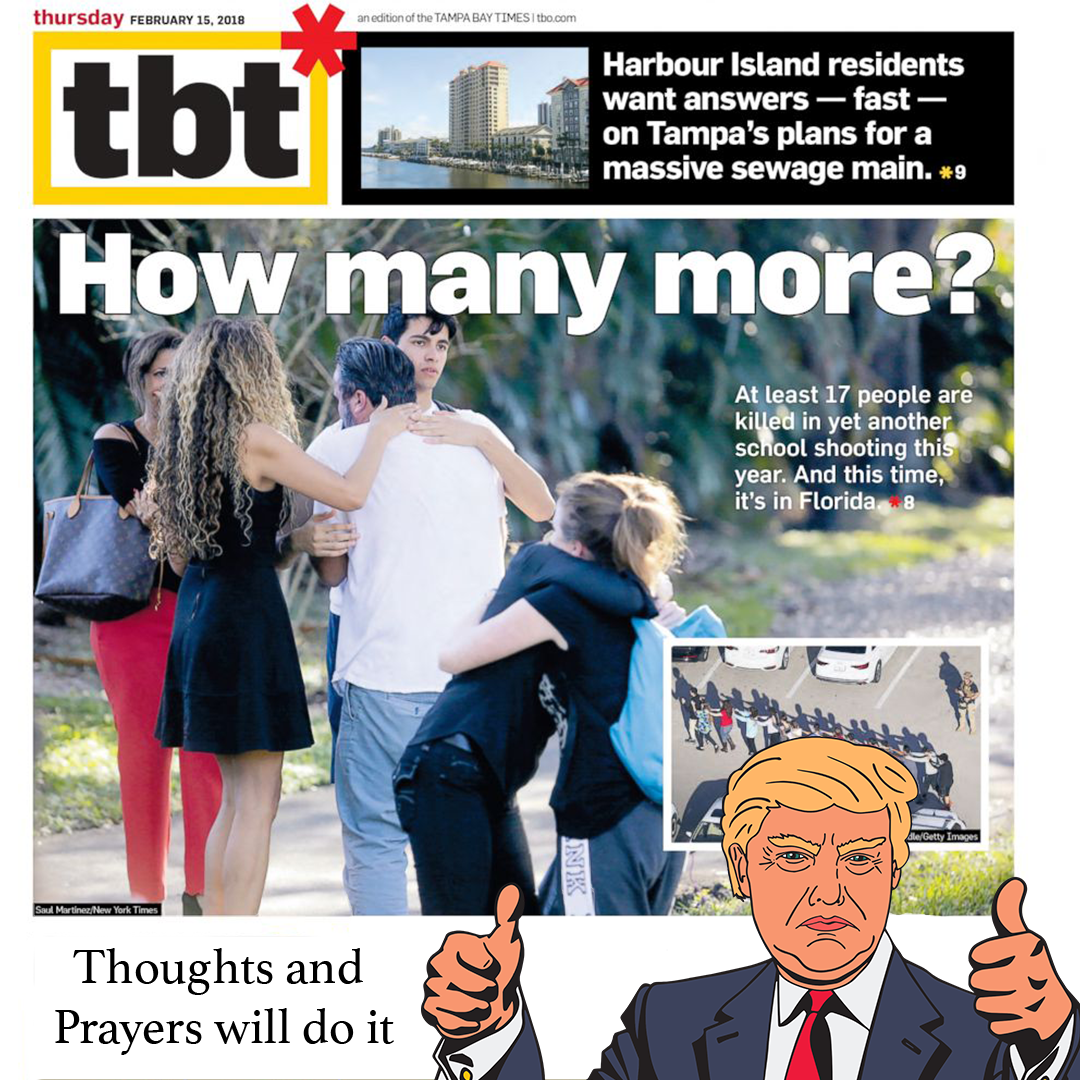
 For the second meme, I decided to edit it in order to make it darker. I turned down the brightness and upped the contrast in order to make the president seem redder like the devil and additionally to highlight how horrible these events are.
For the second meme, I decided to edit it in order to make it darker. I turned down the brightness and upped the contrast in order to make the president seem redder like the devil and additionally to highlight how horrible these events are.

For my final meme, I did one on the Internet because of certain peoples' willingness to believe everything they read on the internet. This was a specific Internet-targeted meme and was fun to compose.
As far as memes f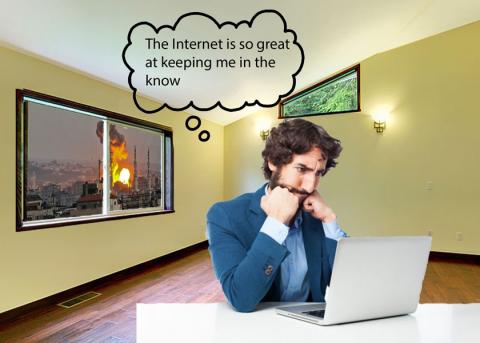 rom the class, one that I feel resonates the most with internet argument is this one posted by Alex Beall. Most people get so caught up on the internet and think they are "woke" by reading so many news stories, but they do not take the time to truly fact check everything or to be vigilant in looking at what is happening around the world. They pay attention to issues that don't matter like the latest Kardashian/Jenner scandal as opposed to the border crisis or the fires in the Amazon.
rom the class, one that I feel resonates the most with internet argument is this one posted by Alex Beall. Most people get so caught up on the internet and think they are "woke" by reading so many news stories, but they do not take the time to truly fact check everything or to be vigilant in looking at what is happening around the world. They pay attention to issues that don't matter like the latest Kardashian/Jenner scandal as opposed to the border crisis or the fires in the Amazon.
I think that something people should take away from this is that you shouldn't believe everything you see. A lot of news articles try to use clickbait titles to get clicks and don't actually report on the actual facts. Additionally, it is important to pay attention to the things that are happening around the world that are having a negative impact on our planet or on human rights.
Animated Gifs
This project required the use of both a program called Snagit (to capture video) and Adobe Photoshop (to create gifs). I had a lot of fun brainstorming ideas for this project. It took me a few hours, but I was able to come up with a few ideas that I liked. It took me a while to figure out how to format and create these, but ultimately I came up with a final product I was happy with.
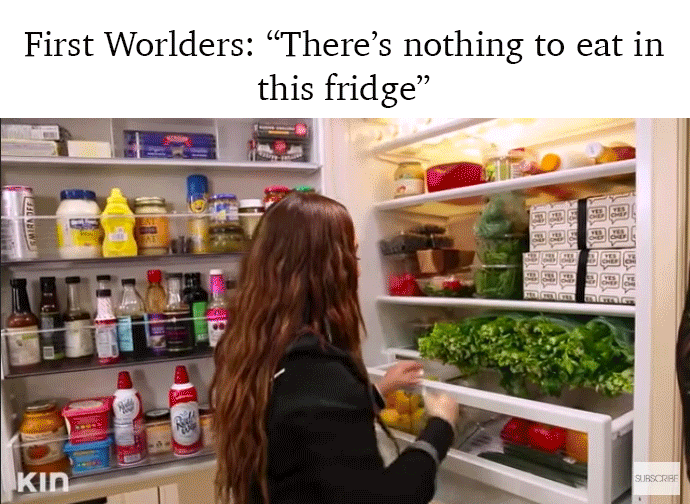



These are the three gifs I composed throughout the time we had to make them. The last one definitely took the longest to make due to the fact that I had to make it first into a video so I could change the speed and then into a gif. It took a lot of research to figure out how to do it, but ultimately I prevailed.
As you can see with the side by side of the second gif, I decided to edit it and make it so the words came in individually to highlight each one more. I thought it was a nice touch rather than just having them both there the entire time. It captures your attention more to see each one flash in.
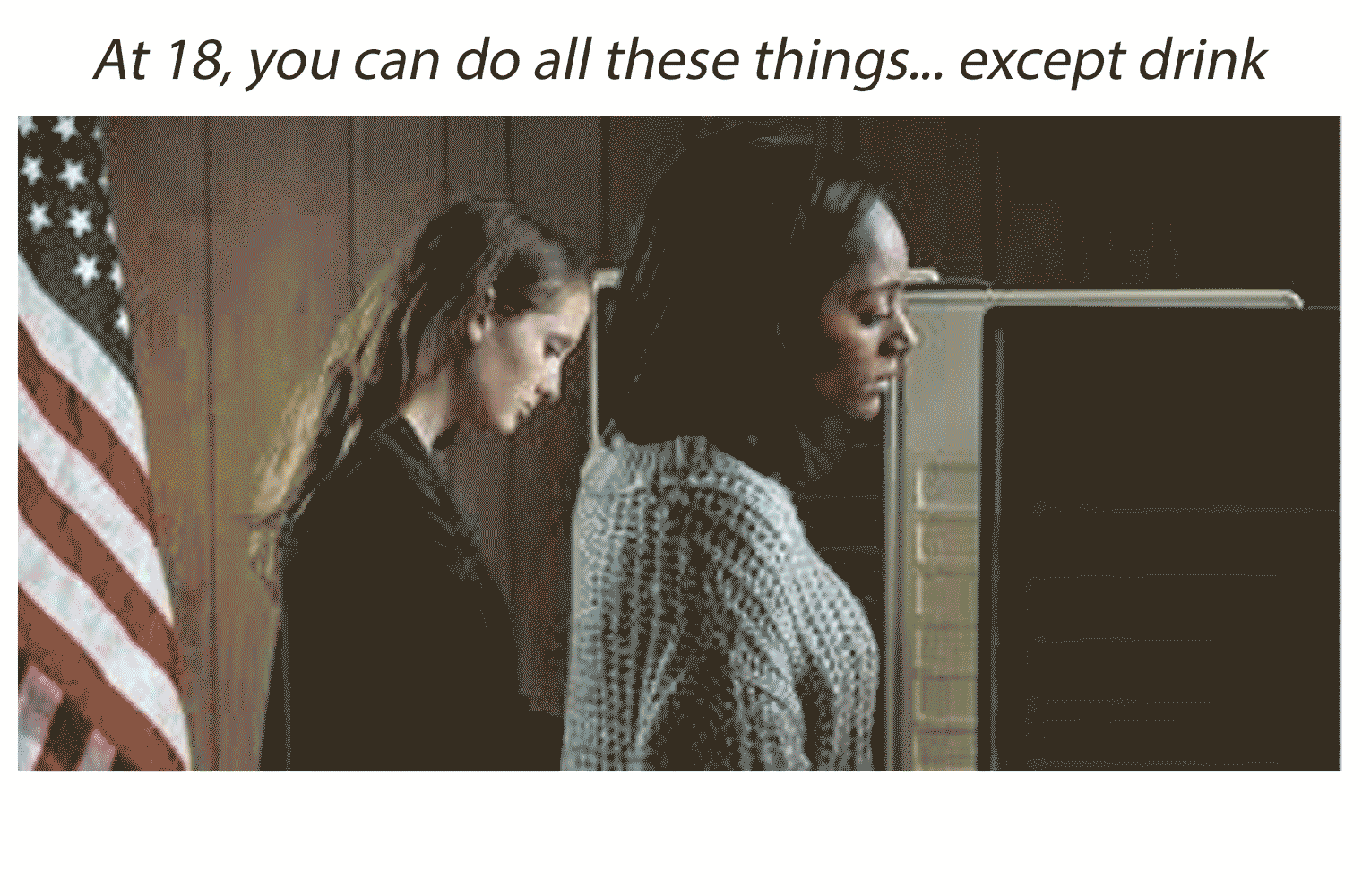
One gif that resonated with me the most was this one by my classmate Trent Lupton. I believe it speaks to an argument on the internet about when a person has the full mental capacity to perform certain tasks and how that is decided. It's a valid point to show how we are allowed to do all of these potentially dangerous things at 18 but are not allowed to drink. Apparently, our minds are developed enough to serve in the military and risk our lives but not enjoy a glass of wine.
From this project, I learned that gifs aren't as difficult to make as I once imagined. Although mine are not perfect, I'm proud of what I came up with. The first two gifs were fueled by my emotions towards the topics while the last one was designed out of pure creativity. I thoroughly enjoyed working with Photoshop in this and have definitely acquired some new skills since first starting.
Class Comments
Comments in this class were a way for us to respond to Professor Anderson with our input and also to get an understanding of other students' perspectives on certain articles or other things posted to the website. I believe that the readings were actively engaging and it wasn't too difficult to create a comment pertaining to them. Additionally, it was nice because I could give others feedback through my comments. Below, I've compiled the comments I made over the course of the class.
In this comment, I did two peer reviews for the audio essay that gave my opinion on certain questions provided by Professor Anderson.
http://altscholarship.com/argunet/comment/111#comment-111
For this comment, I introduced the idea for my app argument.
http://altscholarship.com/argunet/comment/171#comment-171
This comment was in response to a reading about visual strategies.
http://altscholarship.com/argunet/comment/185#comment-185
In this comment, I detailed my experience with Photoshop (which was none) and discussed an article provided by Professor Anderson.
http://altscholarship.com/argunet/comment/186#comment-186
This was a test meme that we made following the instructions of Professor Anderson.
http://altscholarship.com/argunet/comment/220#comment-220
We did a reading on Pizzagate and posted a comment about our thoughts.
http://altscholarship.com/argunet/comment/231#comment-231
For this, we experimented with making gifs and this is my test image.
http://altscholarship.com/argunet/comment/256#comment-256
In this comment, I linked to 3 different examples of the different types of memes.
